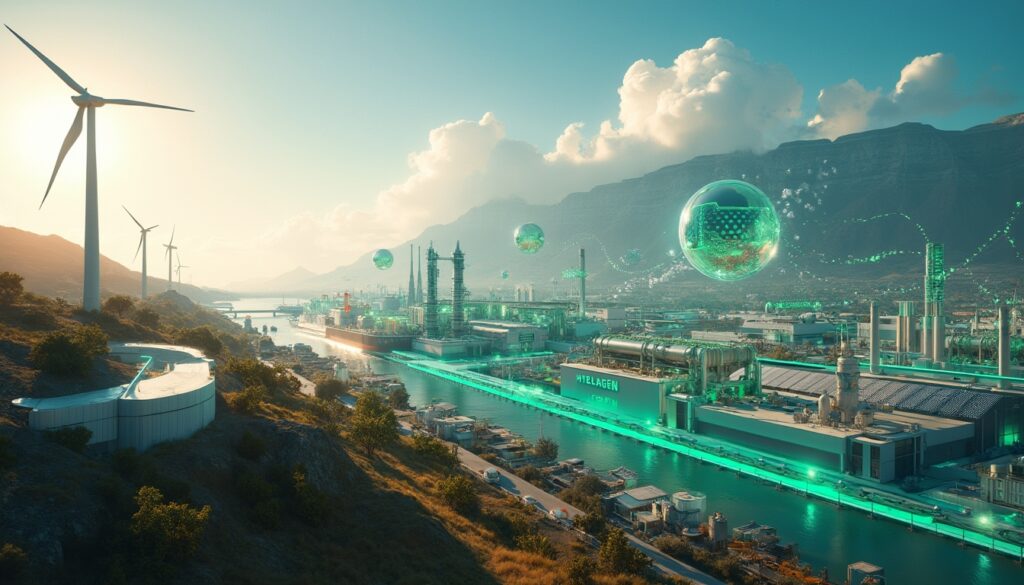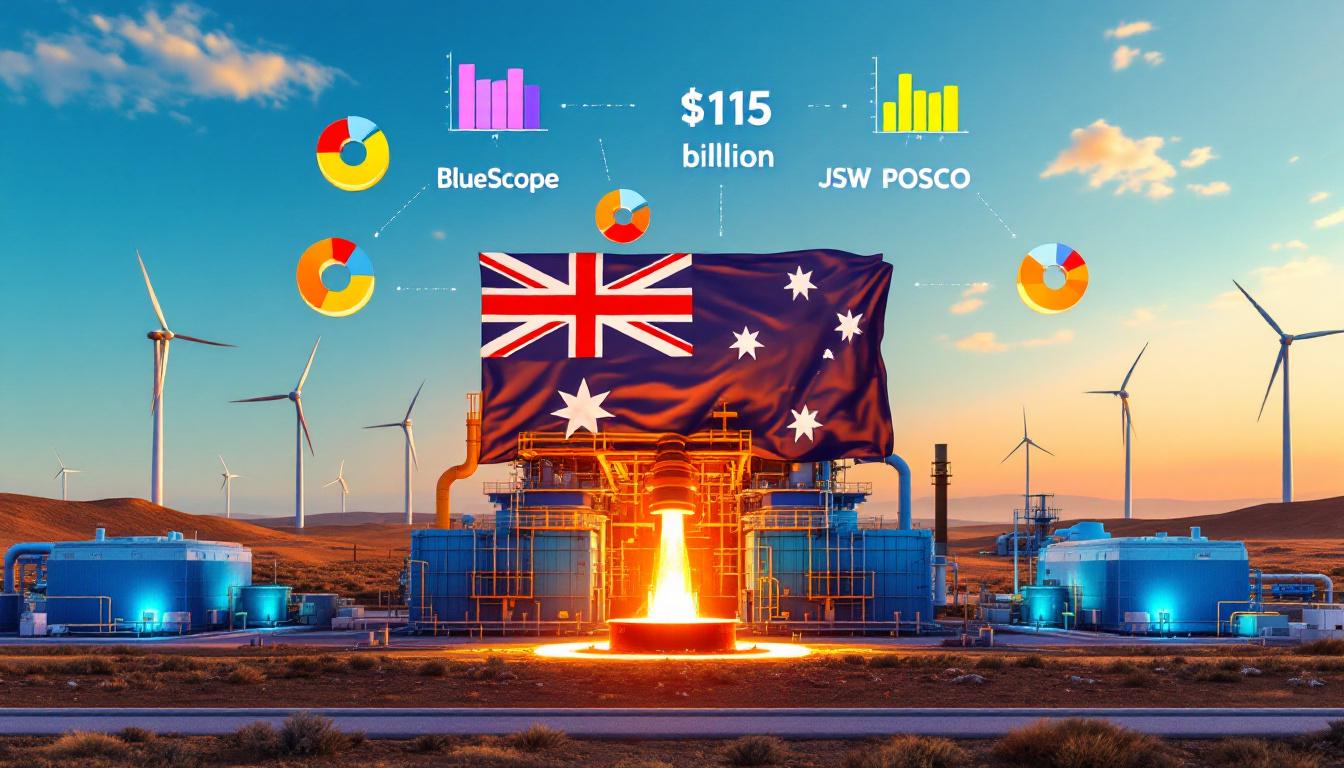The European Union has announced a landmark €4.7 billion investment package for South Africa’s clean energy future. This generous commitment, reflecting EU backing green hydrogen in South Africa, highlights the drive to develop a sustainable economy. The package underscores the strategic partnership between Europe and South Africa.
The investment has received praise from european energy initiatives, attracting global attention.
The package forms a core part of the EU’s Global Gateway Initiative. It supports infrastructure projects globally while promoting European values and sustainable development. Commission President Ursula von der Leyen emphasised this during the EU-South Africa Summit in Cape Town.
Her comments affirmed that EU backing green hydrogen in South Africa is a future-defining move.
South Africa is ideally positioned for green hydrogen production. The country holds nearly 91% of the world’s platinum group metals reserves. This advantage supports the clean hydrogen economy.
Its mining sector is already evolving into new roles. For instance, mining's energy role is transforming local industries.
Exceptional renewable resources add to South Africa’s attractiveness. Many areas receive over 2,500 hours of sunshine annually. Coastal regions also enjoy wind capacity factors above 40%.
These natural resources are key to increasing production efficiency and reducing costs in green hydrogen ventures.
Rising industrial capabilities bolster the country’s position. Both government and private sectors invest strongly in clean hydrogen. Local companies are embracing advanced technologies.
Several mining giants are eyeing opportunities in the emerging hydrogen value chain. This momentum reinforces the promise of EU backing green hydrogen in South Africa.
Platinum group metals play a vital role in hydrogen production. These metals act as catalysts in water electrolysis and fuel cell operations.
For example, processes using platinum achieve efficiency rates as high as 80%. This efficiency demonstrates platinum’s key role in clean energy innovations.
Beyond fuel cells, PGMs are essential for hydrogen purification and storage. They enable ammonia cracking and the operation of liquid organic hydrogen carriers.
These applications are crucial to constructing a robust hydrogen supply network. Each catalytic process helps mitigate greenhouse gas emissions.
The Clean Trade and Investment Partnership is a novel collaboration between the EU and South Africa. It goes beyond standard trade deals by adding local value in green hydrogen.
European companies gain from incentives such as preferential market access and regulatory support. These measures encourage technology transfer and skill development.
The agreement is designed to safeguard local industries. It ensures that South Africa benefits from value addition instead of merely exporting raw materials.
This strategic move aligns with the nation’s industrial policy and strengthens broader decentralisation efforts.
Transporting green hydrogen over long distances poses several challenges. Hydrogen’s low volumetric energy density complicates storage and transport.
Innovative solutions are being developed to overcome these hurdles. Two key methods use PGM catalysts to transform transportation dynamics.
Ammonia emerges as a highly efficient hydrogen carrier. It contains 17.8% hydrogen by weight, making it easier to handle.
Ruthenium catalysts are critical in cracking ammonia to liberate hydrogen at the point of use. This process increases energy density and efficiency.
Liquid organic hydrogen carriers offer another viable method. Platinum catalysts facilitate both the hydrogenation and dehydrogenation steps.
These carriers benefit from existing petroleum infrastructure. This synergy helps reduce overall transport costs while ensuring energy stability.
In related processes, mining industry challenges also dictate economic viability.
Robust economic benefits await South Africa. The green hydrogen sector could generate 30,000–50,000 quality jobs by 2040.
These roles span mining, processing, manufacturing, and logistics. Local beneficiation of minerals could capture up to five times more value than exporting raw resources.
The EU-South Africa partnership leverages long-standing trade links. Annual trade between the two regions is close to €50 billion.
South African exports already enjoy duty- and quota-free access in the EU. This favourable setup paves the way for a thriving green hydrogen export market.
Economic forecasts remain promising. The sector could contribute 2–3% to South Africa’s GDP by 2050.
Analysts estimate this equates to roughly R300–450 billion in annual output. Rising investments from bodies such as the eu hydrogen agenda further underpin growth.
The broader context of this partnership is equally exciting. The collaboration is part of the expansive "Scaling up Renewables in Africa" campaign.
This initiative, championed by President von der Leyen and President Ramaphosa, looks to accelerate renewable energy adoption continent-wide.
EU backing green hydrogen in South Africa is central to this transformative agenda.
The campaign plans a major pledging event at the G20 Summit in Johannesburg. Global partners are expected to announce additional funds.
The International Energy Agency has underscored Africa’s potential to produce over 5,000 million tonnes of hydrogen yearly. This support boosts investor confidence.
Global Citizen has also joined the effort. They stress that climate action and economic development must go hand in hand.
Their advocacy helps ensure that the transition benefits even the most vulnerable communities.
The success of these initiatives might serve as a model for other resource-rich nations.
What makes green hydrogen different from other types?
Green hydrogen is produced using renewable energy exclusively. This method ensures zero carbon emissions during production. It stands apart from grey, blue, and pink hydrogen variants.
How will the PGM industry benefit from green hydrogen?
The demand for platinum, iridium, and ruthenium will surge. Analysts forecast an additional 1–2 million ounces of platinum annually by 2040.
This increase could stabilise prices and foster further mining investments.
What infrastructure investments are necessary for hydrogen?
A dedicated infrastructure is crucial. This includes adding 15–20 GW of renewable energy capacity, creating desalination plants, and upgrading port facilities.
Investment estimates for these improvements lie between R500–700 billion over the coming decades.
How competitive will South African green hydrogen be globally?
South Africa may produce green hydrogen at prices between $1.60 and $2.00 per kilogram by 2030.
Such cost efficiency positions it alongside top producers like Australia, Chile, and Saudi Arabia.
These competitive prices, bolstered by natural resources and mining expertise, fortify its export potential.
What timeline is expected for major projects?
Commercial projects should begin by 2025–2026. Initial capacities of 50–100 MW pave the way for larger-scale developments.
By 2030, gigawatt-scale projects will come online. Complete export infrastructure is projected to be operational by 2035.
Key industry points include:
- Exceptional renewable resources driving the hydrogen revolution.
- Strategic mining investments supporting domestic value addition.
- Robust job creation and GDP growth prospects for South Africa.
- Innovative storage and transportation methods reducing costs.
This detailed examination showcases how the EU backing green hydrogen in South Africa is set to transform the nation’s energy landscape. Enhanced by cutting-edge technology and forward-thinking partnerships, South Africa is poised to emerge as a global leader in the green hydrogen revolution.
Want Real-Time Updates on Mining Discoveries That Transform Portfolio Performance?
Discover the next major mineral investment opportunity before the market with Discovery Alert's proprietary Discovery IQ model, which instantly notifies investors of significant ASX mineral discoveries. See why historic discoveries can generate substantial returns by visiting our dedicated discoveries page and begin your 30-day free trial today.




